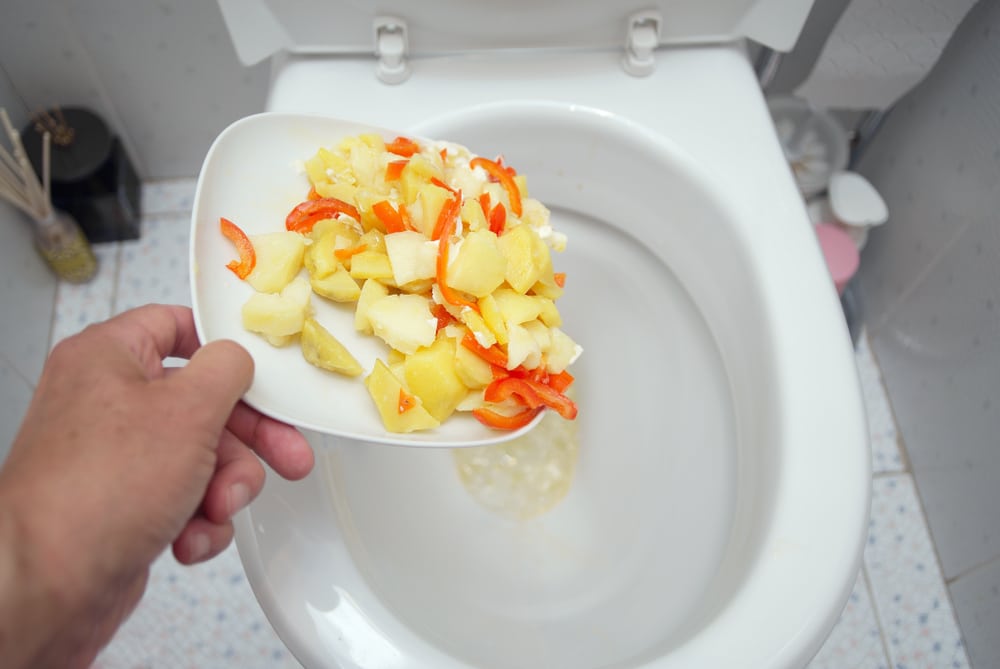Is it Possible to Dispose of Food in the Toilet?
Is it Possible to Dispose of Food in the Toilet?
Blog Article
Just how do you actually feel in relation to Flushing Food Down the Toilet??

Intro
Many people are typically faced with the predicament of what to do with food waste, specifically when it pertains to leftovers or scraps. One typical concern that occurs is whether it's alright to flush food down the commode. In this short article, we'll delve into the reasons that people may think about purging food, the repercussions of doing so, and different methods for appropriate disposal.
Reasons why individuals might think about purging food
Absence of recognition
Some people might not be aware of the potential harm caused by flushing food down the toilet. They may mistakenly think that it's a safe technique.
Convenience
Purging food down the commode may seem like a quick and easy option to dealing with unwanted scraps, particularly when there's no close-by trash can available.
Negligence
In some cases, individuals might simply choose to flush food out of sheer idleness, without taking into consideration the effects of their activities.
Effects of flushing food down the bathroom
Environmental impact
Food waste that winds up in rivers can contribute to air pollution and damage marine environments. In addition, the water made use of to purge food can strain water resources.
Pipes concerns
Purging food can result in clogged up pipelines and drains, creating pricey pipes repairs and troubles.
Sorts of food that should not be flushed
Fibrous foods
Foods with fibrous appearances such as celery or corn husks can obtain tangled in pipes and trigger clogs.
Starchy foods
Starchy foods like pasta and rice can absorb water and swell, resulting in obstructions in pipes.
Oils and fats
Greasy foods like bacon or cooking oils need to never be purged down the toilet as they can strengthen and create obstructions.
Proper disposal techniques for food waste
Making use of a garbage disposal
For homes equipped with waste disposal unit, food scraps can be ground up and purged via the plumbing system. However, not all foods are suitable for disposal in this manner.
Recycling
Specific food packaging materials can be recycled, decreasing waste and lessening environmental effect.
Composting
Composting is an environmentally friendly method to take care of food waste. Organic products can be composted and utilized to enrich dirt for gardening.
The significance of proper waste monitoring
Minimizing ecological harm
Correct waste management techniques, such as composting and recycling, aid lessen air pollution and protect natural resources for future generations.
Securing plumbing systems
By preventing the practice of flushing food down the bathroom, house owners can prevent expensive pipes repairs and keep the honesty of their pipes systems.
Verdict
To conclude, while it might be appealing to flush food down the commode for ease, it is very important to recognize the potential repercussions of this action. By taking on proper waste management methods and getting rid of food waste sensibly, individuals can add to much healthier pipes systems and a cleaner environment for all.
FLUSH FOOD DOWN THE TOILET?
FLUSHING FOOD CAN CAUSE BLOCKED DRAINS IN YOUR HOME
All of the plumbing fixtures in your home are connected to the same sewer pipe outside of your home. This outdoor sewer pipe is responsible for transporting all the wastewater from your home to the Council sewer mains. Even small pieces of food that go down the kitchen sink can cause problems for your sewer. It should therefore be obvious that flushing larger bits of food, such as meat, risks a clog in either the toilet itself or the sewer pipes. Flushing greasy food is even more problematic because oil coagulates when it cools, coating the interior lining of your pipes.
THE TOILET IS NOT A BIN
Food isn’t the only thing that people shouldn’t be flushing down the toilet. People use the toilet to dispose of all kinds of things such as tampons, makeup wipes, dental floss, kitty litter and even underwear. Water goes to great lengths to educate residents about the high costs and stress placed on wastewater treatment systems simply from people flushing the wrong stuff down the toilet. It costs taxpayers millions of dollars each year, and homeowners thousands in blocked drain repairs.
FLUSHING FOOD IS A WASTE OF WATER
Flushing food is a waste of our most precious resource - water. In June this year Level 1 water restrictions were introduced to protect water supply from drought conditions. Much of New South Wales continues to be affected by prolonged drought with recent figures revealing up to 97 per cent of the state remains in drought. Depending on whether you have a single or dual flush toilet, every single flush uses between five and 11 litres of water. In the current climate this is a huge amount of water to be wasting on flushing food that should be placed in the bin (or better yet, the compost).
https://www.jabplumbingsolutions.com.au/blog/can-you-flush-food-down-the-toilet

I came across that review on Flushing Food Down the Toilet? when exploring the internet. Sharing is caring. Helping people is fun. Thank you for taking the time to read it.
Website Report this page